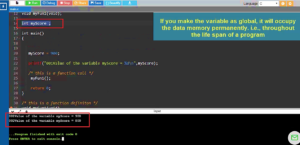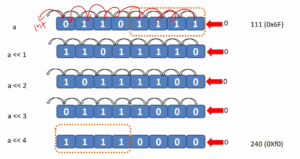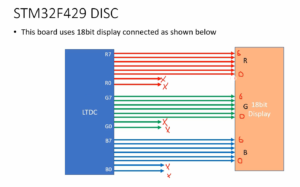Unary operator in ‘C’
Unary Increment Operator and Unary Decrement Operator
There are a couple of unary operators in ‘C’.
++ is a symbol for the unary increment operator.
– – is a unary decrement operator.
These operators need only one operand. That’s why these operators are called unary operators.

Consider this expression x++. Here, ‘x’ is a variable, and ++ is an expression of incrementing the value of x by 1. Now, x- – is an expression of decrementing the value of x by 1 using increment and decrement operators.
Suppose, if I write something like this x = x + 1, this is also an increment operation. But here, I used the addition operator, which is the arithmetic operator. Now, the equivalent of this expression using the unary operator would be x++. Both are the same. In both cases, the x value will be incremented by 1. So, x=x+1 is done using the arithmetic operator, and x++ is done using the unary operator.
First, let’s discuss the unary increment operator ++. ++ is a unary operator and it can appear on either side of an expression.
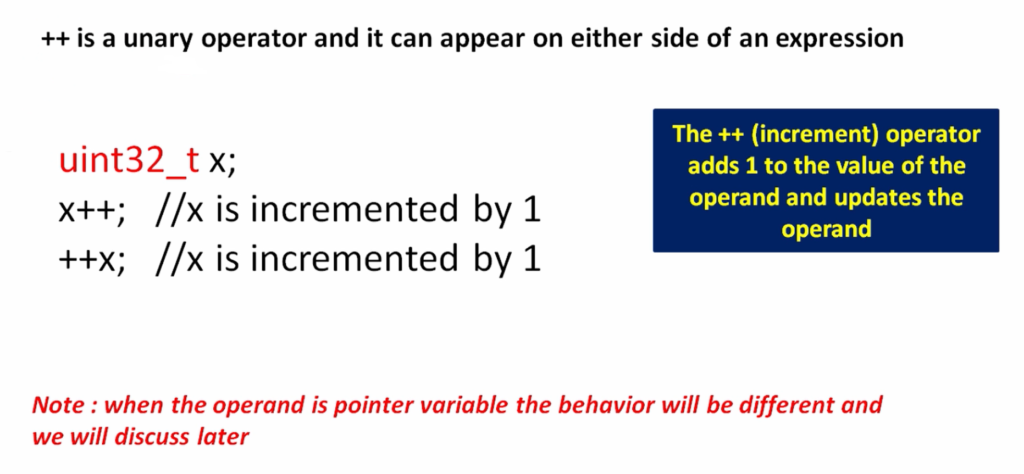
Consider the expression, as shown in Figure 1. Here there is a variable x. If you do x++, then x is incremented by 1. And you can also do ++x, this is the same as x++, here also, x is incremented by 1. So, the operator, you can use either side of an expression.
You have to remember that the increment operator(++) adds 1 to the value of the operand and updates the operand.
Let’s see some examples.
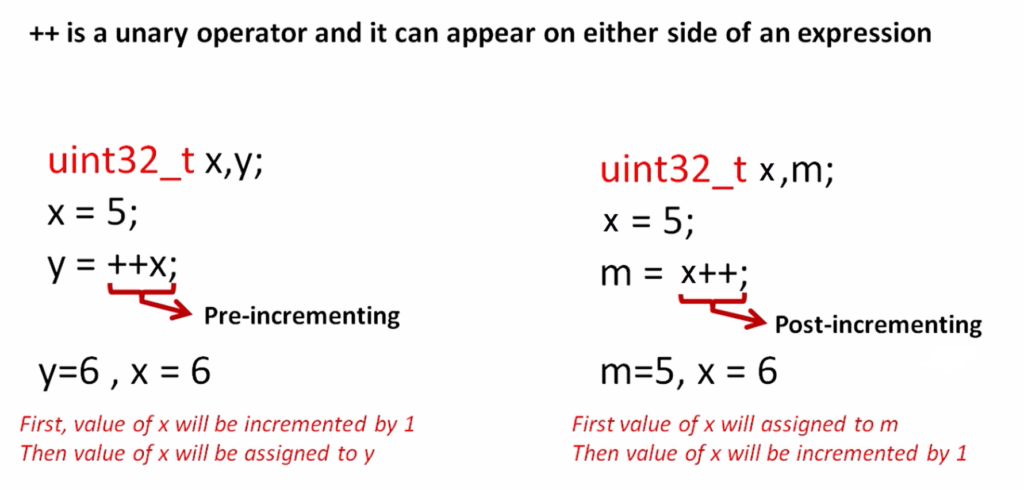
Here there are two variables, x and y. x is initialized to 5. After that, observe this expression, y = ++x. After this expression, y’s value will be 6, and x value will be 6. That is the final result.
Let’s analyze how. Here, the first ++x expression will be evaluated in this case. If you consider the ++x expression, this is called pre-incrementing. In this case, the value of the x will be incremented first. So, 5 becomes 6. And after that, that new value will be assigned to y. That’s why 6 will be assigned to y.
So, first the value of x will be incremented by 1, and then the value of x will be assigned to y. So, y = 6, x = 6.
Consider another example. Here there are two variables, x and m. x = 5 and m = x++. This is called post-incrementing. Here, the first value of x will be assigned to m, and then the value of x will be incremented by 1. That’s why, after this m=x++ expression, the result will be m = 5 and x = 6.
So, there are two types of incrementing. One is pre-incrementing, and another one is post- incrementing.
Now let’s understand pre-decrementing and post-decrementing.
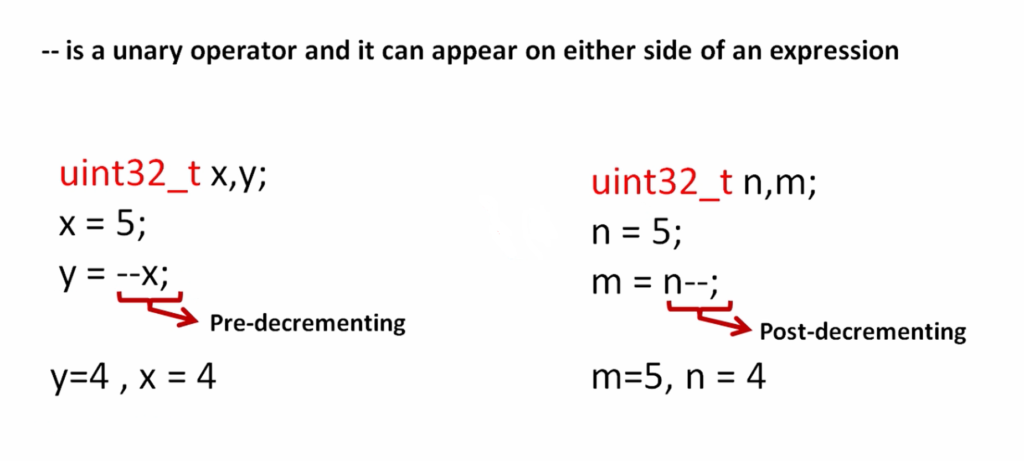
Here x and y are two variables. Consider x = 5. y = – -x; – -x is a pre-decrementing. That’s why the first value of x will be decremented by 1. So, x becomes 4. After that, the new value of x will be assigned to y. So, y =4, x = 4.
Consider another example. Here there are two variables, m and n. n- – is called post-decrementing. In this m=n- – expression, first the value of n will be assigned to m, so m will be 5. And after that, n will be decremented by 1. That’s why the result will be m = 5 and n= 4.
In the following article, let’s understand unary operators with pointer variables.
FastBit Embedded Brain Academy Courses
Click here: https://fastbitlab.com/course1

